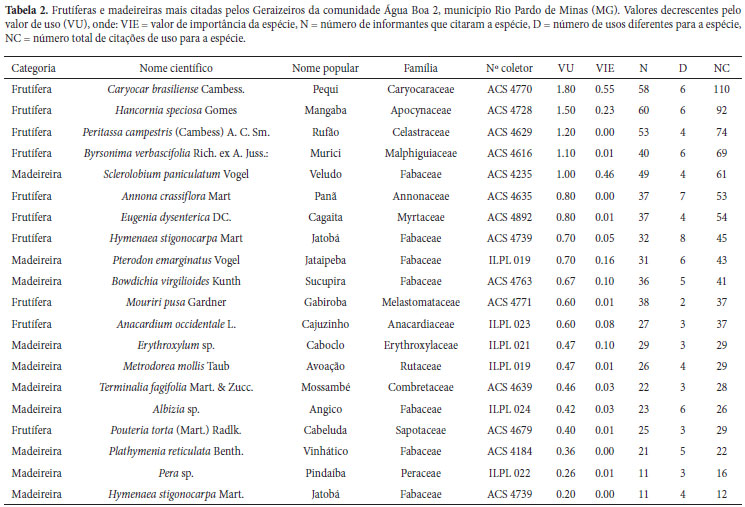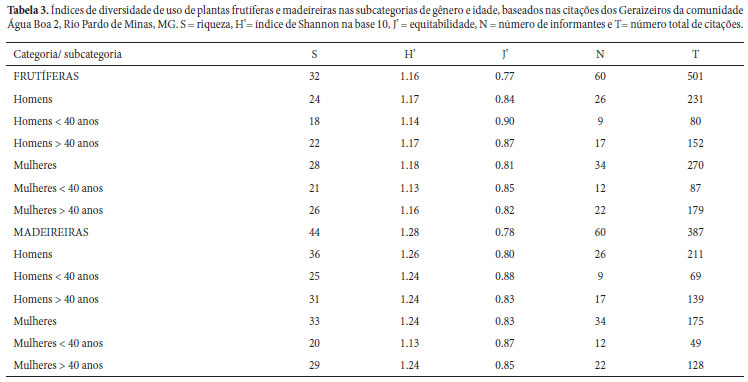The conservation and sustainable use of biodiversity requires knowledge about the native vegetation and how local people use available natural resources. The aims of this study were to test the ecological appearance hypothesis and to survey the diversity of uses and distribution of knowledge about useful plants in a tradicional community (Geraizeiros) in the municipality of Rio Pardo de Minas, in northern Minas Gerais, Brazil. Caryocar brasiliense Cambess., Hancornia speciosa Gomes, Sclerolobium paniculatum Vogel and Pterodon emarginatus Vogel presented higher use (0.7 to 1.8) and phytosociological importance values (1.31 to 36.98). The use diversity (H' = 1.13 to 1.26) and plant diversity in the environment (H' = 3.11) were low. Men demonstrated more knowledge of useful species than women and there were no significant differences related to informant age. A positive relationship was found between utility and plant availability in the environment, confirming the ecological appearance hypothesis. These results may contribute to the conservation of the cerrado savanna, the livelihood of local people and the establishment of management strategies based on local demands and priority species.
Ecological appearance; extractive reserve; quantitative ethnobotany; use value






